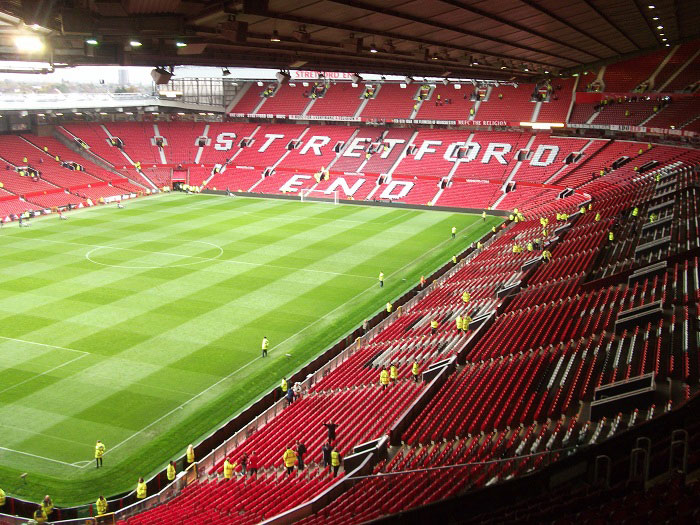High Performance Debt Financing Strategies for Sports Clubs
Jackie Bowie, Chief Executive at independent debt advisory JCRA, reveals some innovative funding strategies for Sports Clubs looking to finance their growth ambitions.
The basics
When arranging a loan, a sports club is no different to any other borrower. A club can look at either its physical asset base, its cash flows, or both in order to secure debt financing.
The value of the physical asset is the determinant for the amount of debt that can be raised; measured as a loan to value. For example a 60% loan to value ratio means the borrower can raise debt up to 60% of the value of the asset.
For lending secured against cash flow, the quantum of debt is related to a ‘multiple’ of the operating profit – say 3x this number. The normalised level of operating profit to raise debt against needs to be determined, which can be complex, taking into account different assumptions and the certainty of future income.
Development Financing
Few clubs have the financial resources to self-fund large development projects, and therefore will look to the debt market for capital. The project cash flow is the starting point for determining how much debt is needed and for how long. Lenders understand that the initial cash flow forecast will change, as delays to the project are likely to arise, as well as possibly cost overruns. Lenders will therefore closely monitor the spending. Borrowers need to ensure that the development financing model takes into account the full financing cost; e.g. from the point at which the debt is committed by the lender, there will be an interest cost (non-utilisation or commitment fee) even if the debt is not drawn.
There also needs to be a defined ‘take out’ of the loan at the end of the development period. For example, will the same lenders continue with term loan style funding, or will the club be required to undertake a full refinancing exercise? This needs to be determined at the outset of the development project so that the lender has clear sight as to how they will be repaid.
Securing against the physical asset
For many sports clubs, the value of the asset (its stadium usually) would seem an obvious choice to secure debt against. However, lenders sometimes struggle to consider a stadium as security, as its value as a property asset is primarily tied to its use as a stadium for the sports club that calls it home. This means there is limited ‘alternative use’ value that a lender can base its credit risk analysis on. Sports clubs can however have other assets related to the stadium, for example hotels and conference centres where the value can be measured not just in relation to the sports club itself, but more broadly. This makes the credit decision easier for a lender although consideration will be given to the dependency of the related assets on the Club.
Forward Funding on Future Revenue
Another option for sports clubs is to raise debt financing on the security of future revenue streams. Future revenue streams can be income from broadcasting, sponsorship deals, transfer fees, merchandise and other operating income. Securing debt against these revenue streams is referred to as forward funding.
The riskiness of forward funding for the borrower depends on the level of recourse the lender requires over the Club’s assets. For example, if the forecast revenue does not materialise, to what extent does the lender have a legal right to a claim against the Club? The cost of debt funding is heavily influenced by this. Securing a lower cost of debt is usually a priority but the Club needs to be aware that this means the lender will be seeking greater recourse to the Club’s assets.
The cost of debt for forward funding is currently very attractive. Lending markets are strong, margins are low and interest rates are extremely low (less than 1%). A lender will undertake a high level of financial diligence and scrutiny into the future revenue stream and borrowers should be well prepared with scenario and sensitivity analysis on that revenue stream, for example changes to the payments for broadcasting rights that are related to the performance of the club.
Other forms of capital
More broadly, there are plenty of alternate ways to raise capital in this sector. Looking at the county cricket clubs for example, who are using their broader asset base (hotels, leisure and conference centres) to borrow from high street banks. Many county cricket clubs can present a very commercial business plan that reduces the credit risk as it dilutes the influence of the stand-alone sports club revenue. Also racecourses are able to do the same by highlighting their corporate and events income streams - Ascot racecourse has substantially upgraded its Village Enclosure for example. The Jockey Club raised a retail bond in 2013, offering investors a 7.75% yield – cash interest at 4.75% and 3% return in royalty points that can be spent on racing, food and drink. This was then extended in 2017, with over 95% of the original investors retaining their positions. A loyal membership base can therefore be tapped for debt capital, and these ‘lenders’ are happy to take their returns in rewards, not just cash.
The structure of debt financing for sports clubs requires a tailored approach as one size does not fit all. Considerations include current assets and cash flows as well as future cash flows and the clubs approach to and ability to take risk. Alternative funding solutions are available and have been used successfully. Above all it is important to work with partners that truly understand the underlying business and can offer a bespoke solution for a successful fund raise.











































